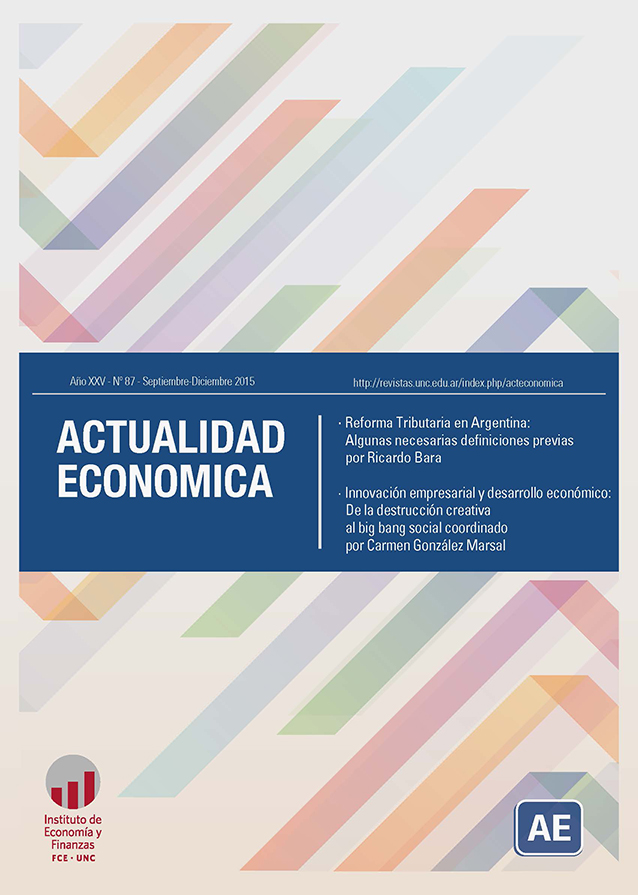Business innovation and economic development: From creative destruction to the coordinated social big bang
Keywords:
Schumpeter, innovation, entrepreneurship, economic development, dynamic efficiencyAbstract
This article is based on Schumpeter's distinction between innovation and invention based on its economic consequences and analyzes his well-known concept of creative destruction caused by business innovation. Next, it focuses on the decisive effect of social harmonization of the exercise of entrepreneurship, suggesting the overcoming of the Schumpeterian concept through the idea of coordinating creativity. In this way, it is understood that business innovation, instead of leading to the self-destruction of capitalism, makes unlimited economic and social development possible, a process that has been called a coordinated social big bang.Downloads
References
Hayek, F.A. (1990). La fatal arrogancia. Los errores del socialismo. Madrid, Unión Editorial.
Huerta de Soto, J. (2000). La Escuela Austríaca. Mercado y creatividad empresarial. Editorial Síntesis, Madrid.
Huerta de Soto, J. (2004). “La teoría de la eficiencia dinámica”. Procesos de Mercado, vol. I, n. 1, pp. 11-71.
Huerta de Soto, J. (2010). Socialismo, cálculo económico y función empresarial. Unión Editorial, Madrid.
Rothbard, M.N. (2001). “Monopolio y competencia”. Libertas, n. 34, pp. 43-172, disponible en <http://www.eseade.edu.ar/files/Libertas/10_2_Rothbard.pdf> (consultado 1-09-2014).
Schumpeter, J.A. (1912). Theorie der wirtschaftlichen Entwicklung. Duncker & Humblot, Leipzig.
Schumpeter, J.A. (1934). The Theory of Economic Development. An Inquiry into Profits, Capital, Credit, Interest, and the Business Cycle, Harvard University Press, Cambridge.
Schumpeter, J.A. (1939). Business Cycles. A Theoretical, Historical and Statistical Analysis of the Capitalist Process. McGraw-Hill, Nueva York.
Schumpeter, J.A. (1952). Capitalismo, Socialismo y Democracia, Aguilar, Madrid.
Downloads
Published
Issue
Section
License
Those authors who have published with this journal, accept the following terms:
Authors will conserve their copyright and guarantee the magazine the right of first publication of their work, which will be simultaneously subject to the Creative Commons Attribution-NonCommercial-NoDerivative 4.0 International License that allows third parties to share the work as long as the author and first publication of this magazine are indicated.
Authors may adopt other non-exclusive license agreements to distribute the published version of the work (e.g., deposit it in an institutional telematic archive or publish it in a monographic volume) provided that the initial publication in this journal is indicated.
Authors are allowed and encouraged to disseminate their work through the Internet (e.g., in institutional telematic archives or on their website) before and during the submission process, which may lead to interesting exchanges and increase citations of the published work. (See The effect of open access)









